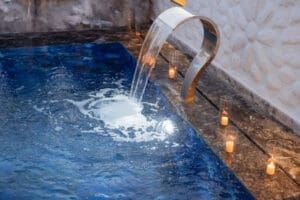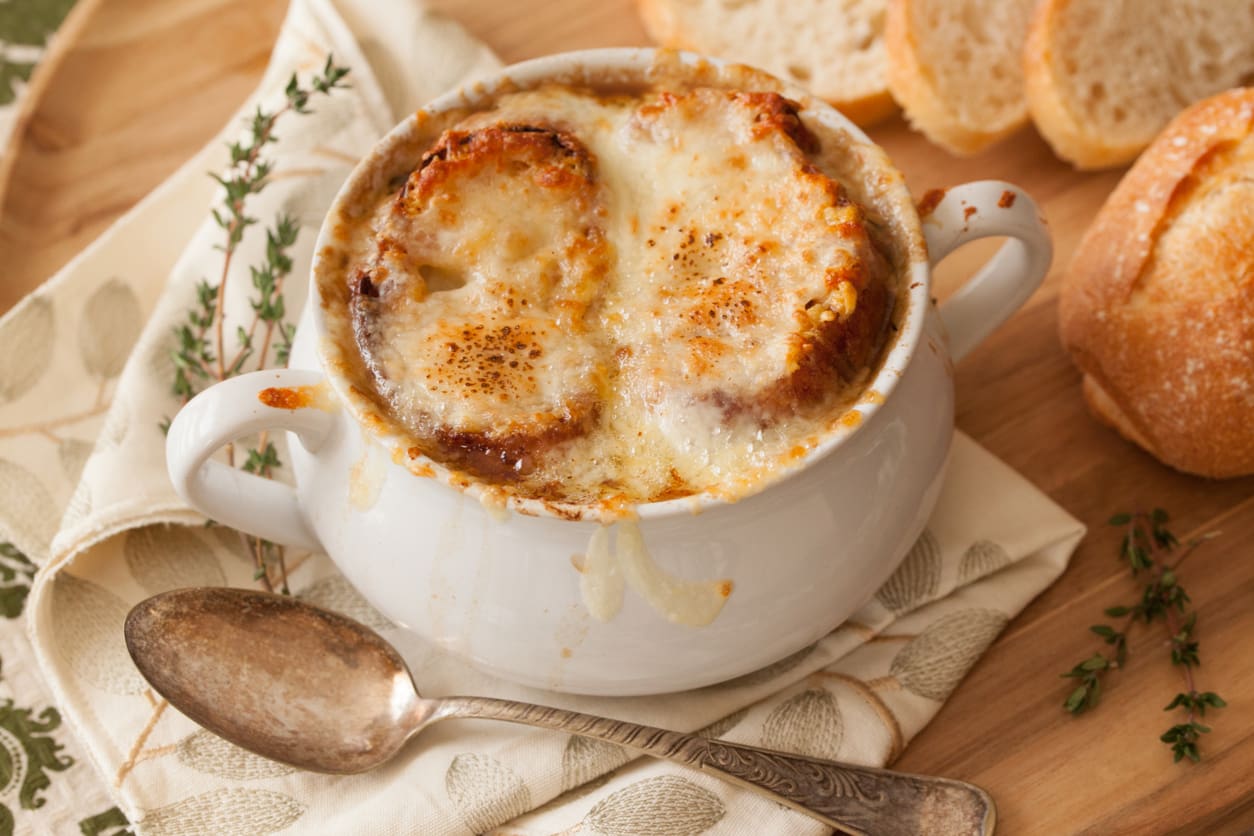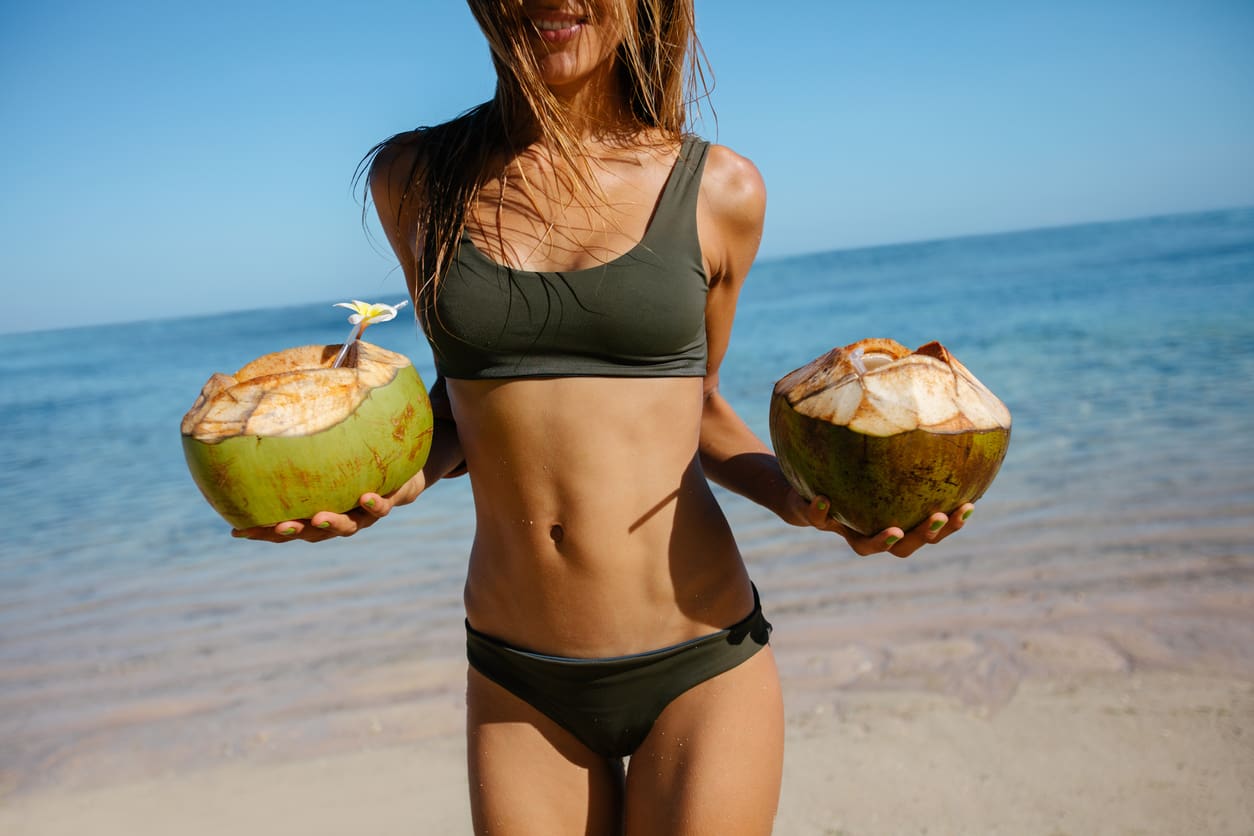Cold plunging is all the rage these days. It seems like everywhere I go people are talking about cold plunging, which involves submerging your body in very cold water to potentially enhance athletic muscle recovery, reduce inflammation, boost metabolism, activate brown fat, garner a mood boost, burn calories, and improve mental well-being. Sounds intriguing, lets dive in!
Determining your optimal frequency for cold plunging is essential to maximize the cold water benefits while minimizing the risks. In this article I will cover important questions regarding your cold plunging routine, such as, what are the potential benefits of cold plunging, how often should you cold plunge, and how cold should the water in a cold plunge be?

What Does The Cold Plunge Do For You, How Often Should You Cold Plunge, And What Is The Ideal Cold Plunge Temp?
Here Are The Exciting Potential Benefits Of Cold Plunging
The health benefits cold plunging offers make cold plunging an excellent practice for promoting recovery, mental well-being, and promoting overall vitality. When practiced safely, cold plunging may offer several health benefits including:
Enjoy Faster Muscle Recovery: Cold water immersion can reduce muscle soreness and expedite recovery post-exercise. Cold plunging constricts blood vessels, reducing swelling and inflammation in muscles and joints. This effect is especially beneficial for athletes or those recovering from intense physical activity, as it helps alleviate delayed onset muscle soreness (DOMS) and promotes quicker recovery.
Reduce Your Inflammation: Exposure to cold temperatures may decrease inflammation and swelling in tissues. The sudden exposure to cold water forces the body to work harder to maintain its core temperature. This process stimulates blood flow, improving circulation and oxygen delivery throughout the body. Enhanced circulation can contribute to better cardiovascular health and quicker healing of injuries.
Enhance Your Mental Health: Regular cold plunging has been associated with improved mood and reduced symptoms of anxiety and depression. Cold plunging causes and endorphin release. Cold plunging triggers the release of endorphins and norepinephrine, which are natural mood-enhancing chemicals. These neurochemicals can reduce feelings of stress, anxiety, and depression, leaving participants feeling more focused and invigorated.
Rev Up Your Immune System: Some studies suggest that cold exposure can stimulate the immune system, enhancing it’s function. Regular cold plunging has been linked to increased production of white blood cells, which are crucial for fighting infections. It also helps reduce oxidative stress, bolstering the body’s immune defenses over time.
Burn Calories, Activate Brown Fat And Increase Your Metabolism: As your body expends energy to warm your core body temperature you burn calories. The cold exposure activates your brown adipose tissue or fat, which burns calories to generate heat. This process can improve your metabolism and support weight management, making cold plunges an effective complement to a healthy lifestyle.
Cold plunging is a tool, in your overall health toolbox, that, can contribute to physical recovery and mental well-being. Starting with shorter durations and gradually increasing exposure, while paying close attention to your body’s responses, is essential for safety and effectiveness. Consulting with a healthcare professional before beginning a cold plunging regimen is advisable, especially for individuals with underlying health conditions.
To find an assortment of excellent cold plunges check out The Cold Plunge Store here.
How Often You Should Cold Plunge
What’s The Optimal Frequency For Cold Plunging?
The ideal frequency for cold plunging varies based on your individual goals, experience, and health status. General cold plunge recommendations for the differing skill levels include:
If Your A Cold Plunge Beginner: Start with 2 to 3 sessions per week to allow your body to acclimate to the cold water stimulus. This gradual introduction helps in minimizing potential shock and adverse reactions. Listen to your body and start out slow. Maybe you just dip in and jump right back out to start.
If Your An Intermediate Plunger: Increase your cold plunge frequency up to 4 to 5 times per week as your tolerance builds. Consistent cold water exposure can enhance your body’s adaptive responses, potentially leading to improved cold plunge benefits.
For Advanced Plungers: Here’s where you get serious. Daily cold plunging may be appropriate for those with significant experience and established cold water tolerance. However, it’s crucial to monitor your body’s cold response and avoid overexposure, which can lead to adverse effects.
A study highlighted by Lost in Float suggests that aiming for a total of about 11 minutes of cold water immersion per week, spread over multiple sessions, can be beneficial. Check out an array of quality cold plunges here.
Factors Influencing Cold Plunge Frequency
Several factors should be considered when determining how often you want to engage in cold plunging:
Consider Your Individual Health Status: Consult with a healthcare professional before beginning a cold plunging regimen, especially if you have underlying health conditions such as cardiovascular issues or diabetes. Certain medical conditions may contraindicate cold water immersion.
Pinpoint Your Personal Goals: What’s your purpose for cold plunging? Is it muscle recovery, mental resilience, calorie burn, or inflammation reduction? Each can influence the optimal frequency of your cold plunge session. For instance, athletes seeking muscle recovery may benefit from more frequent sessions compared to individuals using cold plunging for general wellness. If your plunging for muscle soreness and recovery, plunge 3 to 7 times a week, if plunging for improved mental health or general wellbeing 3 to 5 times a week is a good goal.
Analyze Environmental Conditions: The availability of safe and controlled cold water environments can affect how often you can practice cold plunging. Ensure that the setting is safe to prevent accidents or hypothermia.
Practice Acclimatization: Gradual exposure is key. Starting with less frequent sessions and increasing over time allows your body to adapt, reducing the risk of adverse reactions.
Safety Considerations
To ensure a safe cold plunging experience:
Monitor Your Cold Water Immersion Duration: Limit each session to 1-10 minutes, especially when starting. Prolonged exposure can increase the risk of hypothermia. As you become more accustomed, you may extend the duration slightly, but always within safe limits.
Maintain A Controlled Water Temperature In Your Cold Water Tank: Maintain water temperatures between 50°F to 59°F (10°C to 15°C). Extremely cold temperatures can be hazardous, especially for beginners.
Practice Mindful Post Cold Water Immersion Warming: After exiting the cold water, warm your body gradually using blankets or warm clothing. Avoid hot showers immediately after to prevent rapid changes in blood pressure.
Consider Supervision: Engage in cold plunging under supervision, especially during initial sessions, to ensure immediate assistance if needed. Having a companion can enhance safety and provide support and fun.
How Long Should You Cold Plunge?
Optimal Duration For Cold Plunging: The ideal duration for cold plunging varies based on individual tolerance, experience, and specific health goals. General guidelines suggest:
Beginner Cold Plungers: Start with short immersions lasting 1 to 2 minutes to allow the body to acclimate to the cold stimulus.
Intermediate Cold Plungers: Gradually increase the duration of cold plunging to 3 to 5 minutes as comfort level with cold plunging grows.
Advanced Cold Plungers: Some people may extend sessions up to 10 minutes; however, caution is advised to prevent adverse effects such as hypothermia.
Factors Influencing Cold Plunge Duration
Several factors should be considered when determining the appropriate length of a cold plunge:
The Water Temperature: Colder water temperatures may necessitate shorter immersion times to prevent hypothermia and other cold-related injuries.
Your Individual Tolerance: Personal comfort levels and physiological responses to cold vary; it’s essential to listen to your body and adjust duration accordingly.
Your Health Status: Individuals with certain medical conditions, such as cardiovascular issues, should consult a healthcare professional before engaging in cold plunging.
Your Purpose For Cold Water Immersion: The intended benefit, be it muscle recovery, mental resilience, or inflammation reduction, may influence the optimal duration and frequency of your cold plunging sessions. 10 minutes is recommended for optimal post workout cooling at temperatures between 50 to 55 degrees Fahrenheit. 1 to 3 minutes is perfect for inflammation reduction at 50 degrees Fahrenheit, and 30 seconds to 1 minute is good for increasing dopamine at 45 degrees Fahrenheit or below.

The Ideal Temperature Range For Cold Plunge Health Benefits
The ideal temperature for a cold plunge typically falls between 50°F to 59°F (10°C to 15°C). Research suggests that water in this range is cold enough to elicit the physiological responses associated with cold-water immersion, such as vasoconstriction, reduced inflammation, and increased endorphin release (Tipton, 2017). However, temperatures below 50°F (10°C) can be effective for experienced practitioners who seek more intense exposure, while beginners may benefit from slightly warmer water to acclimate.
Why Not Colder Water?
While water temperatures below 50°F may amplify some benefits, they also increase the risk of hypothermia and cold shock, particularly for untrained individuals. Extremely cold water can cause rapid cooling of the body, overwhelming it’s ability to maintain core body temperature. Thus, balancing the water’s temperature with personal tolerance is key to a safe and effective cold plunge experience.
The Science Behind Cold Plunging
Cold plunging works by exposing the body to acute cold stress, which triggers various physiological responses:
Cold Plunging To Improve Vasoconstriction And Circulation: Cold water causes your blood vessels to constrict, redirecting blood flow to your vital organs. When you exit the plunge, vessels dilate, improving circulation and flushing out metabolic waste.
Cold Plunging For Inflammation Reduction: The cold reduces inflammation by lowering tissue temperature and slowing the production of inflammatory mediators. This effect is particularly beneficial for athletes recovering from intense exercise.
Cold Plunging To Get An Endorphin Release: The shock of cold water stimulates the release of endorphins, contributing to improved mood and mental clarity.
Cold Plunging For Brown Fat Activation: Cold exposure activates brown adipose tissue (BAT), which burns calories to generate heat. This can boost metabolism and aid in fat loss.
How Cold Is Too Cold With A Cold-Plunge?
How cold is too cold? The answer lies in balancing efficacy with safety. Plunging into water that is too cold for too long can lead to adverse effects, such as hypothermia or cardiac stress. For most healthy people, starting with water around 59°F (15°C) and gradually lowering the temperature as tolerance increases is a safer approach. The goal isn’t to push the limits but to achieve the benefits without risking harm to your body.
Factors Influencing Cold Plunge Tolerance
Experience Level: Beginners should avoid extremely cold water, starting with temperatures closer to 59°F to acclimate gradually. Advanced practitioners may experiment with colder water but should monitor their body’s responses.
Duration Of Immersion: Shorter immersions of 2 to 5 minutes are generally sufficient to achieve benefits without overexposure. Longer immersions increase the risk of hypothermia and should only be attempted under careful supervision (Tipton et al., 2018).
Individual Variability: Factors such as body composition, age, and overall health influence how individuals respond to cold water. Leaner individuals lose heat more quickly, making them more susceptible to cold stress (Castellani & Young, 2016).
Environmental Conditions: Outdoor cold plunges may involve additional risks from wind chill or ambient temperature. Controlled settings, such as indoor ice baths, allow for more precise temperature management.
Practical Tips For Cold Plunging
Start Slowly: Begin with lukewarm water and gradually decrease the temperature over time. This allows your body to adapt to the cold stress.
Focus On Breathing: Controlled breathing reduces the cold shock response, helping you remain calm and extending your immersion time.
Use A Timer: Limit your plunge to 2–5 minutes initially, gradually increasing as your tolerance improves.
Monitor Your Body: Pay attention to signs of overexposure, such as shivering, numbness, or dizziness. Always exit the water if you feel unwell.
Warm Up Gradually: After the plunge, warm up slowly using dry clothing and blankets. Avoid rapid rewarming methods, such as hot showers, which can cause blood pressure fluctuations.

Frequently Asked Questions for Cold Plunging in 2025
What are the benefits and risks of cold plunging?
Unlike warm, relaxing baths taken for relaxation and detox purposes, cold plunges are quick, therapeutic dips in cold water. Many benefits and some risks are involved in this practice. Be sure to consult a healthcare professional before embarking on this adventure.
Where can I find a quality cold plunge?
For an array of the top quality cold plunges check out The Cold Plunge Store.
When is the best time to cold plunge?
The best time to cold plunge depends on your goals. For mental clarity and energy, morning plunges are ideal. For muscle recovery and reduced inflammation, evenings or post-workout are preferred. Cold exposure boosts dopamine and reduces stress, so many incorporate it into daily routines. Consistency is key to cold plunging at the same time each day can improve results. Avoid late-night plunges if it interferes with sleep due to increased alertness.
Is it good to alternate between hot and cold water therapy?
The benefits of alternating hot and cold therapy are both relaxing and rejuvenating. Warm soaks relax your body while the cold shock wakes up your mind and gives you energy.
Both cold and hot water offer benefits in regard to pain relief and healing. Sometimes, choosing one over the other simply may not provide enough, which is where contrast therapy comes in.
With this invigorating method, you can simultaneously reduce inflammation, stimulate circulation, get an endorphin release, and loosen tight muscles.
What is the recommended cold plunge temperature and time?
The recommended cold plunge temperature typically ranges from 50°F to 59°F (10°C to 15°C) for most people. This range provides the therapeutic benefits of cold exposure, such as reduced inflammation, improved circulation, and enhanced mental clarity, while minimizing risk. For beginners, start with 1 to 2 minutes and gradually increase to 3 to 5 minutes as your body adapts. Experienced users may tolerate colder water (as low as 45°F) for short durations. It’s generally not advised to exceed 10 minutes in a plunge without proper supervision. Always listen to your body and exit the water immediately if you feel numbness, dizziness, or discomfort. Cold plunging 3 to 4 times a week offers optimal physical and mental benefits when done safely.
What temp is too low for A cold plunge?
Temperatures below 37°F (2.7°C) are generally considered too cold for safe cold plunging, especially for beginners. Most therapeutic cold plunges range between 45°F to 55°F (7°C to 13°C). Anything below 40°F should be approached with caution and only under supervision or after acclimation. Prolonged exposure to freezing temps increases the risk of hypothermia or cold shock, so always start slowly and limit initial sessions to under 3 minutes.
Should I cold plunge before or after I workout?
Cold plunging after a workout is most beneficial for reducing muscle soreness, inflammation, and aiding recovery. It helps constrict blood vessels and flush out metabolic waste. However, if you plunge before a workout, it may reduce performance by lowering muscle temperature. Some athletes do quick plunges pre-workout to boost focus and adrenaline, but in general, post-exercise cold plunges offer better physical benefits for muscle recovery.
How to keep cold plunge water clean?
To keep cold plunge water clean, use a combination of filtration, UV sanitization, and natural treatments like hydrogen peroxide or ozone. Regularly skim debris, clean filters weekly, and change water every 1 to 2 months depending on usage. Avoid adding soaps or oils, and shower before plunging. If using a DIY setup like a chest freezer or stock tank, manually remove debris and add chlorine or bromine in small amounts for sanitation if natural methods aren’t used.
Cold plunging is a tool, in your overall health toolbox, that, can contribute to physical recovery and mental well-being. Starting with shorter durations and gradually increasing exposure, while paying close attention to your body’s responses, is essential for safety and effectiveness.
Consulting with a healthcare professional before beginning a cold plunging regimen is advisable, especially for individuals with underlying health conditions.
Get started on your journey to optimal health today! Be sure to consult your health care professional before you start a cold plunge rountine.
Marneys Tidbits publishes helpful and insightful articles about wellness, beauty, gardening, home design, recipes, restaurants, and travel. Follow us on Instagram, Pinterest, TikTok and Facebook for even more tidbits.














